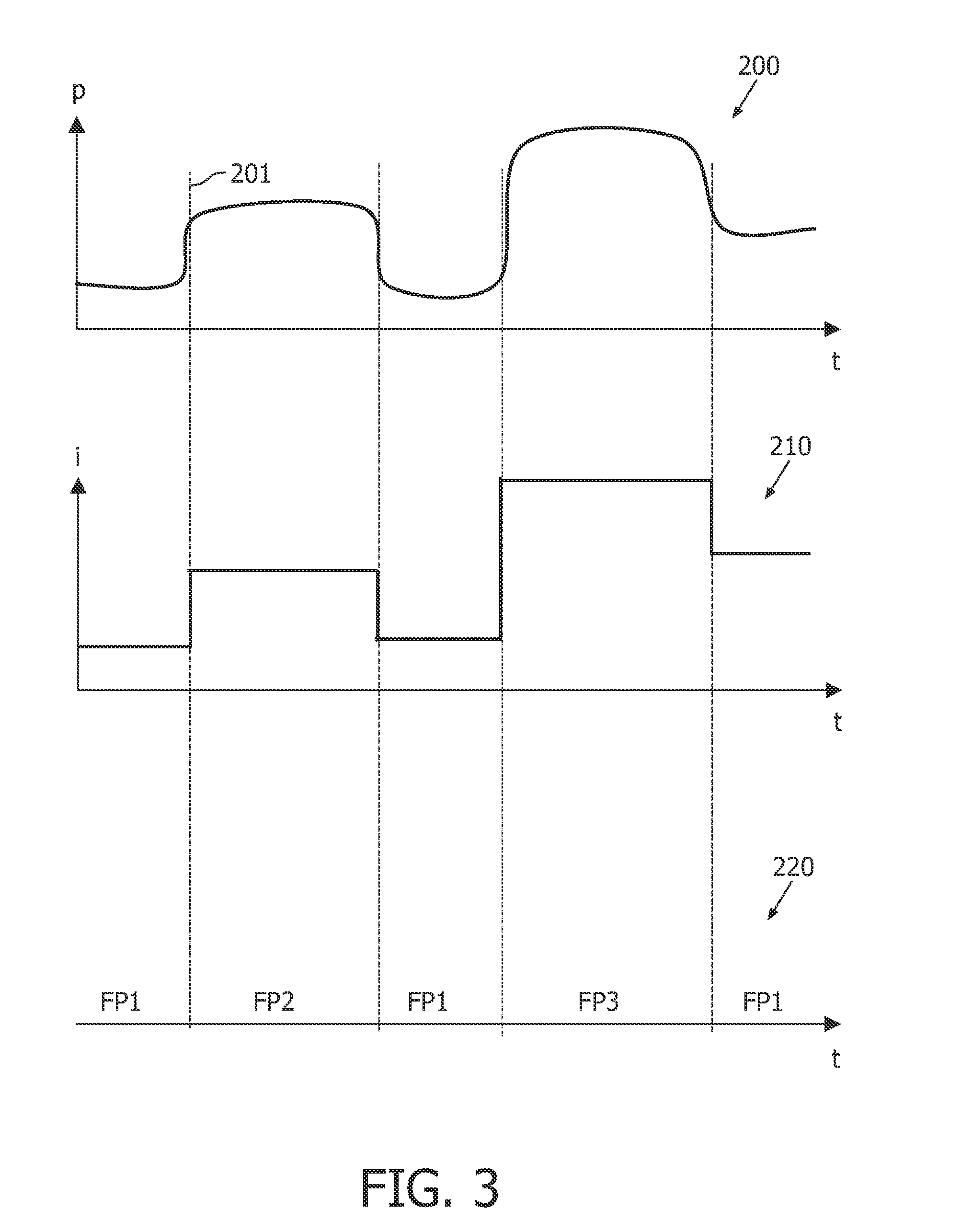Control of light in response to an audio signal
- Summary
- Abstract
- Description
- Claims
- Application Information
AI Technical Summary
Benefits of technology
Problems solved by technology
Method used
Image
Examples
Embodiment Construction
[0043]FIG. 1 illustrates a system or a device including a signal processor 10 having an audio analyzer 11 arranged to receive an audio signal A, e.g. a digital audio stream such as a compressed digital audio stream according to an MPEG standard. The audio analyzer 11 applies a number of signal processing algorithms on the audio signal A in order to extract basic low-level signal properties of the audio signal A, e.g. based on frequency analysis and temporal analysis of the audio signal A. The audio analyzer 11 then combines these low-level signal properties, if available optionally using additional contextual information, to arrive at an analysis result reflecting a temporal evolution of semantic content in the audio signal A.
[0044]A light control parameter generator 12 receives the information regarding the temporal evolution of the semantic content of the audio signal A from the audio analyzer 11, and based thereon it generates a light control parameter reflecting the temporal evo...
PUM
 Login to View More
Login to View More Abstract
Description
Claims
Application Information
 Login to View More
Login to View More - R&D
- Intellectual Property
- Life Sciences
- Materials
- Tech Scout
- Unparalleled Data Quality
- Higher Quality Content
- 60% Fewer Hallucinations
Browse by: Latest US Patents, China's latest patents, Technical Efficacy Thesaurus, Application Domain, Technology Topic, Popular Technical Reports.
© 2025 PatSnap. All rights reserved.Legal|Privacy policy|Modern Slavery Act Transparency Statement|Sitemap|About US| Contact US: help@patsnap.com



